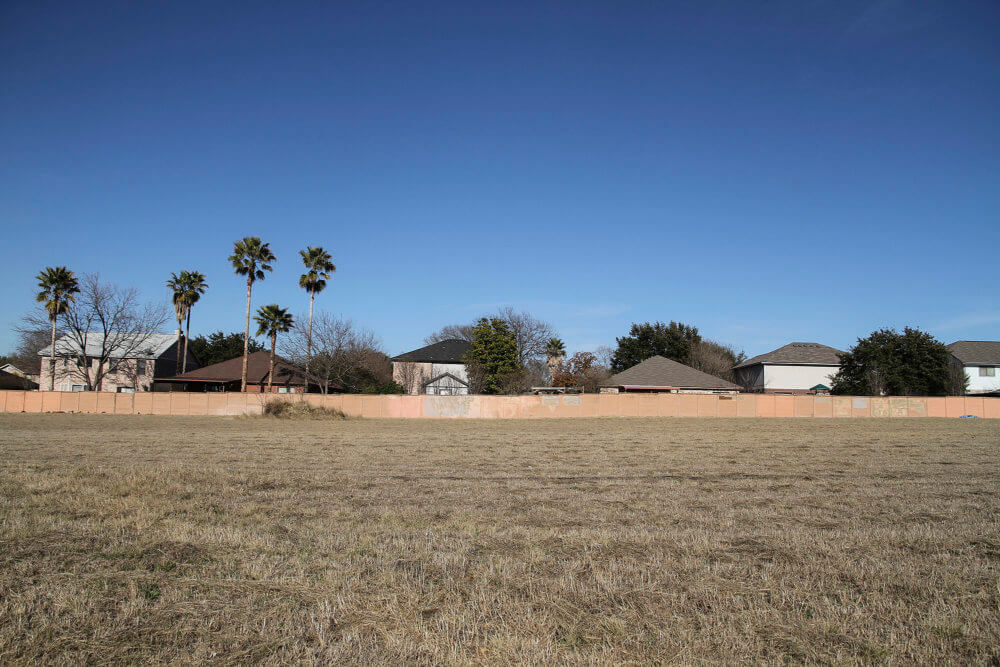
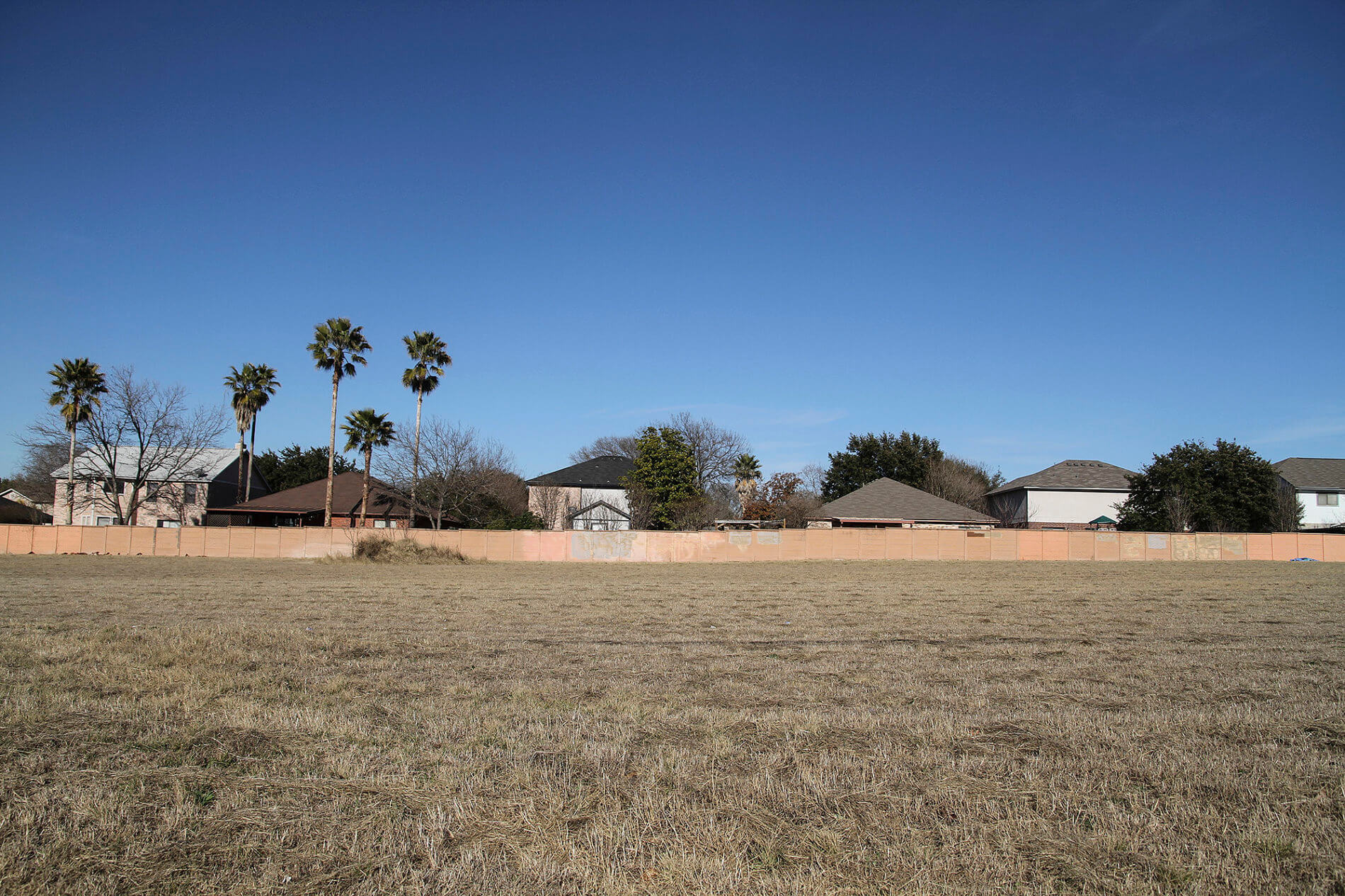
In the northern part of San Antonio’s District 7, Bandera Road is flanked by nearly every type of business imaginable, retail strip after retail strip after retail strip, and a ganglion of subdivisions behind them. At the beginning of 2017, a small cluster of low-income housing developments planned for this area had flown under the radar. The developers, who were applying for low-income housing tax credits to help fund their respective projects, had not notified the communities. In April, when the residents found out, NIMBYism ensued—the not-in-my-backyard response that often accompanies low-income housing developments. Cris Medina, the District 7 councilman at the time, drew the ire of many residents for not informing them of the latent projects early on in the tax credit application process.
Two of the proposed developments at the time — the 96-unit Bristol on Old Tezel Road and the 144-unit Acacia at West Guilbeau Road and Mystic Park — were having their own battle for the highly-competitive 9 percent tax credits, along with other projects citywide. As a matter of policy, the Texas Department of Housing and Community Affairs (TDHCA), the entity that awards the tax credits to developers, won’t grant two projects within close proximity to each other. Either The Bristol or The Acacia could win, but not both.
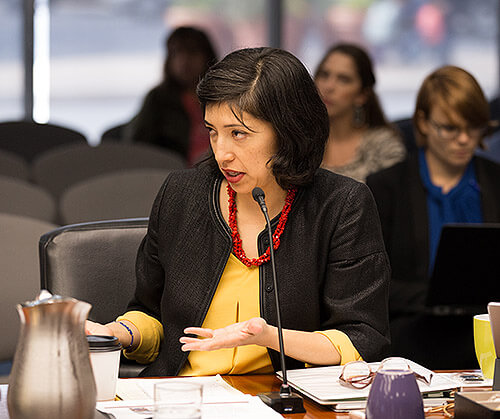
Then came the May 6 election, when Ana Sandoval captured 51 percent of the District 7 vote to defeat Medina.
Later that month, a week before she took office, Sandoval, in coordination with state Sen. Jose Menéndez’ office, bused about 15 people from those neighborhoods to Austin to speak before the TDHCA board. Leading the group was Chelsea Dawson, a resident of Braun Station West, who went armed with a petition.
“The overall lack of community planning is alarming,” Dawson told the board. “We have over 3,000 signatures we are presenting to you to confirm that.” Dawson continued, “Lack of community involvement and communication have generated the signatures I am holding.”
Later, Sandoval told the board she opposed the two developments because of the absence of public engagement. Others, including Dawson, cited flooding issues and the worsening of traffic on already heavily-used Bandera Road as additional reasons to kill the projects.
Ultimately, in July, The Bristol, a project by both Atlantic Pacific Companies of Miami and Madhouse Development Services of Austin, won the tax credits.
Fast forward to December, when another development, the 296-unit Trials at Leon Creek at 7615 Bandera Road, won 4 percent tax credits — considered to be noncompetitive — worth about $19 million. That project, later supported by Sandoval, was developed by Pedcor Investments, an Indiana-based company with a strong presence in Austin.
Throughout this friction between neighborhoods and developers, Sandoval held community meetings. She also was inspired to change the low-income housing tax credit process for developers.
On Dec. 7, Sandoval unveiled a change in city policy intended to put the onus on developers to inform communities on what and (perhaps most important) where they plan to build. Under Sandoval’s proposal, community outreach would become part of the tax credit process at the local level: developers would gain points toward a letter of support or no objection if they notified residents within 200 feet of the proposed site, and held a community meeting.
“I truly believe that to have a good product in our community, you need to bring all the stakeholders to the table,” she said.

As a result of Sandoval’s ordinance, in January, developers held at least a dozen public meetings throughout the city.
We attended a handful of these meetings, because we wanted to see NIMBYism up close. Not to chastise it, but to try to understand it. What we found was that NIMBYism is everywhere. In San Antonio, it’s not just a Northside issue — though, no question about it, that’s where some of the fiercest lines are drawn. We found that the anti-affordable housing sentiment exists on the south and west sides of town, as well. And there are reasons myriad for this pushback, but they usually have to do with concerns over crime, property values, traffic and land use.
On Thursday, the City Council is expected to grant resolutions of support or no objection to many of the projects that have popped up during this year’s tax credit process. This year, the process drew more applicants in the San Antonio region, 21, than in any year since the program began in 1986. Only two or three projects in this region, however, will be granted the tax credits by the TDHCA, the state entity that disburses the awards. Last year, roughly $67 million was allocated for this region. Developers who gain a letter from the city will then include it into its final application, which are due to the TDHCA on March 1. The final credits will be awarded in July.
Local fair housing advocates are paying close attention to see how the policy affects the construction of affordable housing locally.
In San Antonio, there’s a shortage of 153,000 affordable housing units, according to city estimates from 2013. Exasperating the problem are the 1 million new residents that are expected in San Antonio by 2040. The shortage is one that’s being felt across the country. A 2017 report by the Joint Center for Housing Studies at Harvard University shows approximately 11 million families, roughly a quarter of all U.S. renters, spend more than 50 percent of their incomes on housing. And now there’s concern that President Trump’s tax bill, which eases the tax burden on companies, lessens the demand for tax credits. Companies are the ones who purchase the tax credits, thus providing equity to the developer to build affordable housing that’s priced for households making at least 60 percent of the area median income (AMI), which, in San Antonio, is $38,100 for a family of four.
There are two types of tax credits: 4 and 9 percent. The latter are the most lucrative and can fund up to 70 percent of the development’s cost. The process of obtaining these tax credits can provoke many heated arguments amongst developers jockeying for them and, now, between developer and neighborhood.
Still, the fact of the matter is that the low-income housing tax credits program, which is built into the IRS code and administered by each state, is the best mechanism for building affordable housing in the U.S.
The city is trying to conceive its own solutions. In May, voters passed the $20 million neighborhood improvements bond, which will be used to purchase and prepare properties for construction, then sell to an affordable housing developer to build. (Interestingly enough, when the city drafted its list of potential sites and presented them to voters, those sites represented every district except Districts 9 and 10 — the Northside.)
If an affordable housing developer is looking to build downtown, they could take advantage of the Center City Housing Incentives Program (CCHIP), which includes all sorts of goodies like tax reimbursements and city and SAWS fee waivers.
Those two programs don’t come close to the volume of units that tax credits provide, which barely address the need by themselves.
Since the tax credits program began in 1986, at least 17,746 affordable housing units have been built in San Antonio, and 19,477 total created. Do the math. Given San Antonio’s shortage of 153,000 affordable housing units, at the current tax credit pace of 554 units a year, San Antonio will fill the gap in 2294.
In October, Mayor Ron Nirenberg created his Mayor’s Housing Task Force to solve some of these issues. It’s expected to present solutions to the City Council in May.
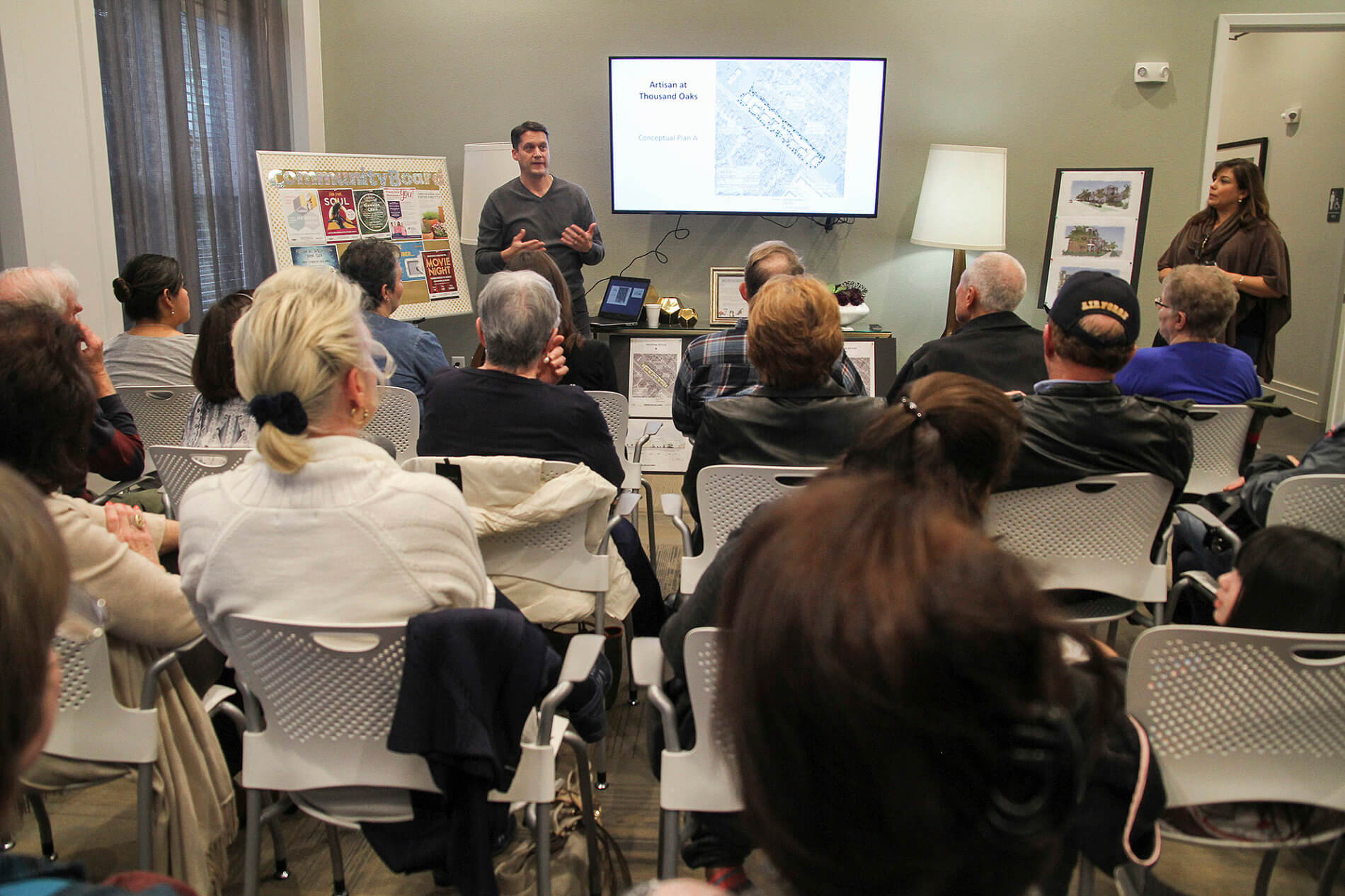
The arguments for and against the new measure can make one’s head spin. Some folks believe Sandoval’s rule is too stringent, while others believe it’s not tough enough.
“People don’t like being surprised about what’s going on in their neighborhood,” Sandoval told Folo Media. The new policy “allows the residents to meet the developer, and get a better sense of what they’re trying to build.”
Some on the City Council, like District 10 Councilman Clayton Perry, believe that it’s the responsibility of affordable housing developers to inform neighborhoods of their intentions to build.
During the Dec. 7 meeting, Perry suggested: Why not make neighborhood engagement mandatory?
“If we do make it a requirement, we would run into potential problems from the Fair Housing Act standpoint,” City Attorney Andy Segovia said.
Developers can earn up to 10 points for community engagement toward its letter of support or no objection. However, a developer could choose to ignore the community and still gain the minimum number of points needed to earn the letter — and that was Perry’s issue. (In his district, Perry’s fear proved true with a project called The Reserve at Thousand Oaks. Proposed for the 4500 block of Thousand Oaks Drive by Miami-based Atlantic Pacific Companies, The Reserve scored 78 points out of 100, well above the 70 points needed for city support. Atlantic Pacific Companies has since withdrawn itself from the process.)
So Perry pushed: Instead of 10 points for public engagement, why not make it 20 points?
“It can’t be an outright prohibition (on affordable housing), but again, we can’t set up the scoring so that it becomes practically a prohibition,” Segovia said.
Sandra Tamez of the Fair Housing Council of Greater San Antonio argues that the mere existence of Sandoval’s rule creates a kind of gauntlet for developers to traverse and therefore essentially makes it a requirement (a point that has been disproven by The Reserve at Thousand Oaks.) The larger issue, Tamez says, is that the rule conflicts with the city’s obligation, as a recipient of other federal housing funding, to provide affordable housing in all parts of the city.
The TDHCA’s scoring matrix is designed to encourage the building of affordable housing in more affluent neighborhoods.
“Our pushback with the city was that they shouldn’t be creating barriers in fair housing, which is not in line with their obligation to affirmably further fair housing,” Tamez said. “The city has a duty, because of their federal funding, to equalize access to opportunity, and increase affordable housing in areas of higher opportunity.”
In a 2016 report, the United States General Accountability Office reported similar concerns, taking aim at policies like the TDHCA’s, which require a developer to procure a letter from the city. The U.S. Department of Housing and Urban Development “has raised fair housing concerns about this practice, saying that local support requirements (such as letters) could have discriminatory influence on the location of affordable housing,” the report reads.
The proof can be found with the Artisan at Thousand Oaks, a proposed development by Franklin Companies on the 3500 block of Thousand Oaks, down the street from the proposed Reserve development. It, too, had applied for tax credits this year. It held its own meeting with neighbors, and attended two others. Unlike the developments around Bandera Road, which dragged on and on last year after the city granted its letters of support, the Artisan at Thousand Oaks never got to this Thursday’s vote because residents rejected it relatively quickly.
Yet, when neighborhoods get involved in a particular project, the project is either rejected (many developers won’t build if an adjacent neighborhood objects) or the total number of units the developer originally planned is decreased. The other side of that coin is that when a community gets involved, they leave the process with a better understanding of what affordable housing is.
Some developers also argue that market rate housing developers don’t have to jump through such hoops like holding public meetings. True, some, like Sandoval, say, but they’re not going for a federal incentive like low-income housing tax credits.
Tamez said her organization has been assessing the impact that Sandoval’s rule change has had on this year’s tax credits process.
The developers come from all over, from Indiana to Miami. And, of course, from San Antonio. This year, twelve affordable housing developers applied for the tax credits. Many of the developers are local and for-profit, like Franklin. Some are nonprofit, like the Alamo Community Group, which is proposing 120 affordable units downtown at North St. Mary’s Street and Jones Avenue. Some nonprofits are from elsewhere, like the Los Angeles-based Cesar Chavez Foundation, which wants to build 140 units (120 affordable) on Culebra Road on the far West Side.
SAHA has partnered with the NRP Group on the Alazan Lofts, which would produce 85 units on properties roughly defined as the southwest corner of El Paso and South Colorado streets in the near West Side. “The project costs and rent price range are currently being developed for final application submission on March 1,” said SAHA spokeswoman Marivel Resendez. The project is part of the redevelopment of the Alazan Courts, for which SAHA is applying for another Choice Neighborhood grant to help fund the transformation.
These massive neighborhood rebuilds are complicated, but possible. Currently, SAHA is using tax credits and Choice funding to help pay for the rebuild of the Wheatley Courts on the East Side into the 414-unit, mixed-income East Meadows development. The $30 million Choice Neighborhood grant spearheaded the makeover, but tax credits — $20.7 million for Phase 1 and $8 million for Phase 2 — helped fill in the funding gap.
At the state level, a developer earns points if their development is located in high opportunity areas — an area with lower poverty and crime rates, and higher levels of education. This played a part in the timing of East Meadows. In 2016, SAHA applied for tax credits to fund the third phase of East Meadows, with 119 units, but the project didn’t score high enough because of the low-performing schools around it. (This was ironic considering the area was also receiving $23.7 million in federal Promise Grant funds to improve educational outcomes in the neighborhood). In 2017, the project won the credits.
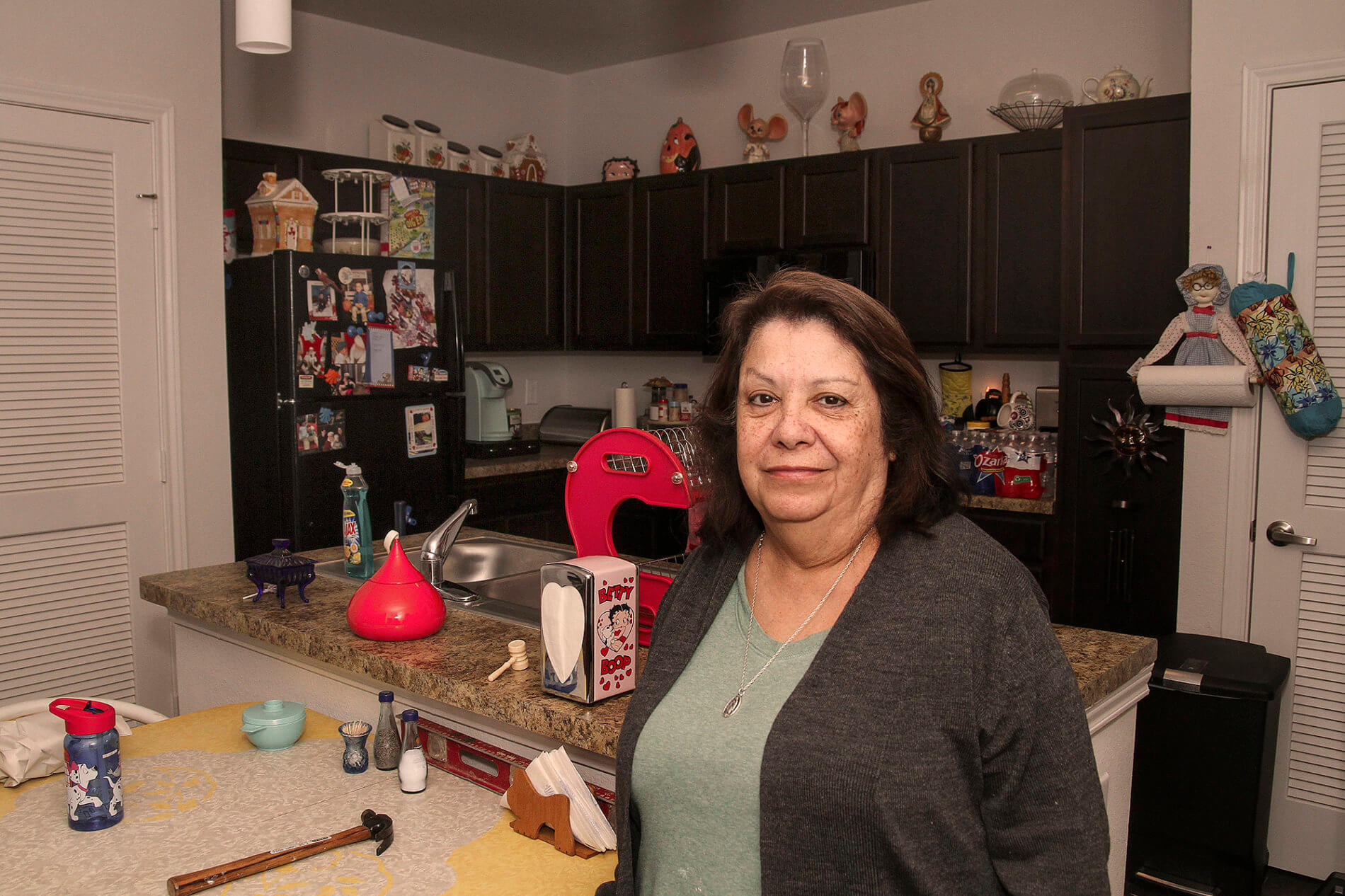
Diana Fuentes, 57, a single mother of one, didn’t say a word as nearly everyone around her aired their concerns over the proposed Artisan at Thousand Oaks in District 10. This was two weeks ago. It wasn’t an angry mob, or anything like that, but many of the questions from the people who live around the five-acre parcel of land — a football field for giants — shot out toward the developer up front like knives.
“Is this Section 8?” asked one woman, standing in the back next to the trays of tortilla wraps and cookies courtesy of the developer.
From a younger couple: “How is this going to impact my property values?”
“Will you sell the property once you build the apartments?” asked an Air Force veteran.
The meeting was held in the community room of the Artisan at Judson Park apartment complex, out by Loop 1604 and Judson Road, where Fuentes lives. Franklin Companies built the Artisan last year.
As people began milling about, Fuentes had something to say to everyone in the room.
“I want to say thank you to him, because without this, we wouldn’t be living here,” Fuentes said in reference to Ryan Wilson, Franklin’s executive vice president of development. “We would probably be living on the South Side or something.”
The meeting was held in response to the new city rule regarding community engagement. The attendees, most from the Eden subdivision that abuts the vacant parcel in question, left with mixed feelings. Many were worried about how the apartments would impact their property values. Others worried about privacy. Wilson argued that the alternative to housing was retail — would you rather have dwellings or a bar or a McDonald’s on the other side of your fence?
Franklin Companies “made some very good points, and they’re going to try to listen and not try to force it on us,” said Eden resident Gene Townsend, 74. “We care deeply about people who are new school teachers or disabled. We care deeply. So somehow people are (saying) that we’re heartless just because we’re concerned what will happen when you juxtaposition apartments with single dwelling homes. We’re not heartless. We want people to have housing.
“I came in here 100 percent against it, but I’m almost like 50-50 — which is huge for me.
The next week, the Eden community voted roughly 80-40 to oppose the development. That night, Franklin spokeswoman Jacqueline Ortiz said, the company called Councilman Perry’s office to inform them they were pulling the Artisan at Thousand Oaks from consideration.
These conversations that have played out throughout the city in a volume that seems unprecedented.
Take the Piedmont Lofts, proposed for the current Moose Lodge #744 in Highland Park on the southeast side. There, NRP Group proposed a 90-unit development, but the neighbors opposed it.
“It’s not the low-income housing that we are concerned with,” said Gregory Ripps, president of the Highland Park Neighborhood Association. “It is the large number of apartment renters, which is different than the single-family homes we currently have.” Ripps continued, “We are not a bunch of rich, snooty people, but we are still proud of our heritage. We have a way of living and we don’t think multi-units is the way our neighborhood ought to be.”
In a recent interview, Jason Arechiga, development project manager with NRP Group, said the company will reduce the total number of units.
On the near West Side, a partnership between Atlantic Pacific and Madhouse has proposed The Legacy at Buena Vista, 96 units at Buena Vista and Las Moras streets, next to Alazan Creek. At that community meeting, many residents opposed the project, including Jason Mata, past president of Prospect Hill Neighborhood Association. He believes the near West Side doesn’t need is more affordable housing.
“Prospect Hill is, in a way, kind of a social service center,” Mata said. “It’s a low-income area and a lot of what we do is connect people with resources.” People “want to see some better development come in the area,” he continued. “It’s a tough pill to swallow, on one hand you can understand the business side, but on the other these people need help.”
Representatives from Atlantic Pacific and Madhouse could not be reached for comment.
Downtown’s a different story. It’s the only area of town where a developer can propose affordable housing and receive incentives from the city. This is because of the CCHIP policy, which grants a bundle of incentives toward housing — market rate or affordable. But it’s usually market rate. Why would anyone want to build affordable housing when you can receive incentives in the millions of dollars, asks Jennifer Gonzalez, executive director of Alamo Community Group.
Gonzalez mentioned the Arts Residences project, a development that’s an amalgamation of hotel, condo and retail near the Tobin Center for the Performing Arts. Under CCHIP, the project will receive $10 million in incentives, the bulk of that package in tax reimbursements.
“If you think about it, if you can go to the city and get those same incentives, why would you make it affordable?” Gonzalez said. “If you could get those incentives for your $3-a-square-foot rent, and pocket that money, why are you encouraged to make that an affordable project?”
John Jacks, director of the Center City Development Office, defended the package.
“The Arts Residences project is a positive example of how the CCHIP program is working to benefit the community,” Jacks said in a statement. “By the City foregoing approximately $9.5 million in property taxes over 15 years, the school district stands to gain $26.5 million in the same period of time as a result of this property’s development. As a surface lot, SAISD would only receive $240,870 over a 15 year period.”
The Arts Residences is also one of the last projects getting incentives through CCHIP, at least until May. In December, Nirenberg put the brakes on CCHIP, saying that the incentives program was attracting too many market rate — or luxury apartment — projects, which are out of range for most San Antonians. There needs to be more affordable housing in the inner city, he said. Not only that, he said, but the luxury apartments are jacking up property values and leading to rapidly changing neighborhoods on the edges of downtown, and in a few cases, outright uprooting of whole communities like the Mission Trials south of downtown along the San Antonio River, where more than 300 people were removed.
Other communities are in jeopardy, like the long-affordable Soap Works and Towne Center apartments alongside San Pedro Creek.
This is why Alamo Community Group wants to build affordable housing units downtown, near the Museum Reach portion of the river, an area where all of the luxury apartments are going. This type of housing would provide options for many people who have service industry jobs at downtown’s hotels and tourist attractions.
“That’s our mission,” Gonzalez said. “This is what we do.”
In May, the Mayor’s Housing Task Force is expected to deliver some policy solutions on housing issues throughout the city. Currently, the city has no incentives policy for affordable housing throughout the city.
The community meetings spurred by Sandoval’s initiative produced many moments where one group of people talked pejoratively about another. This discourse definitely begged the question: Who are the people in need of affordable housing?
According to the rules of the tax credit program, developers must provide the bulk of the units at 60 percent of the area median income. What does that mean? In San Antonio, that’s $38,100 a year for a family of four. For a couple, that’s $30,480. For a single person, it’s $26,700.
Many developers like to characterize this as “workforce housing,” meaning teachers, firefighters, and journalists. And projects like the Museum Reach Lofts and the Artisan at Thousand Oaks planned to price 100 percent of its units at this rate.
But the more diverse the rents are, the more points developers get from TDHCA. The Village at Roosevelt, on the South Side by Prospera Housing Community Services, plans to offer rents as low as 30 percent AMI — $13,350 for a one person, $15,420 for a couple, and $19,050 for a household of four.
Enough numbers. Such housing is for people like Diana Fuentes, who receives a monthly disability check.
Last year, she was paying nearly $1,000 to rent a complex on Thousand Oaks, where she raised her daughter through high school (her daughter is currently a freshman at Texas State). But, every year, the rent went up. Now, her rent is in the $600 range.
“For being on a set income, it’s very hard for all of us,” Fuentes said of herself and her neighbors. “It doesn’t mean we’re all on Section 8. It’s very hard to find an apartment that’s affordable, and that is nice — like these ones are very nice.”
Other cost of living factors played a role, too. In her former apartments, she paid between $30 to $40 a month for utilities. At the Artisan at Judson Park, she pays $3. Built into the TDHCA’s scoring system are points for projects that provide support and outreach services.
“For Thanksgiving, they brought the Food Bank, and they gave out turkeys, they helped a lot,” Fuentes said. “Let me put in this way: I’ve never seen a complex that does a lot of things for us, for the community here.”
Folo Media reporter Darcy Sprague contributed to this report.
This article was originally published by the H.E. Butt Foundation’s Folo Media initiative.